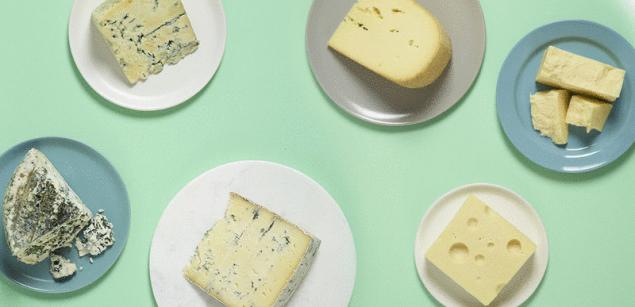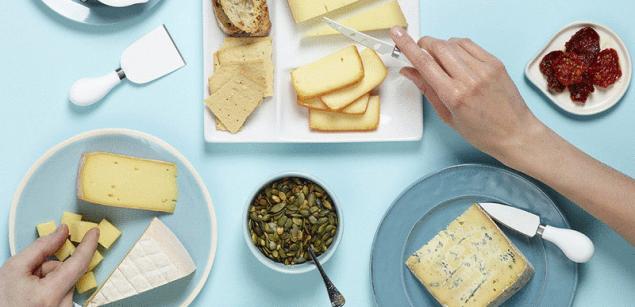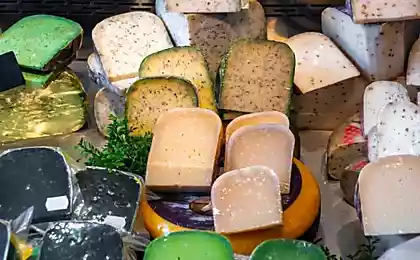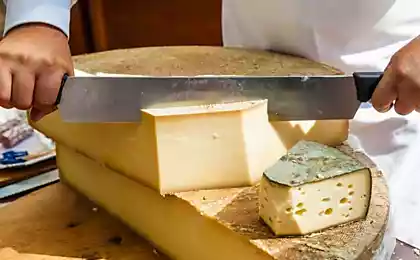699
How to choose cheese and what is important to know when buying

Cheese — a dairy product or dairy composite product made from milk, dairy products and by-products of milk processing with the use of special starter cultures. Cheese product from cheese differs in that it is milk, ie of milk fat in it is replaced by non-milk components.
Cheese is a highly nutritious product. It contains from 15 to 25 % protein, 20-30% fat. Cheese proteins are associated with calcium, why they are absorbed much better than from plant foods. It is rich in not only calcium, but also phosphorus, salts of magnesium, potassium, sodium, trace elements which the body needs for metabolic processes, hematopoiesis, hormones, enzymes. Vitamins in cheese more than milk.
What to look for when buying cheese?
High-quality cheese and fresh cheese – not the same thing. A quality product conforms to requirements of normative documents, but if the cheese is "off" four months of maturation and then hit on the counter, is it fresh? If a young cheese went on sale the day after manufacture, whether it is quality? Almost philosophical questions that won't answer even the experts. Of course, if the head cheese emblazoned black and green fluff, to the fortuneteller do not go, has been tainted with mold.

However, there is cheese and other treacherous appearance:
Cheese the dough should have a uniform color from pale yellow to yellow color, but if we see the cut of white spots, this is a bad sign.
Narrow cracks-cracks instead of smooth holes indicate high acidity.
The uneven texture of the cheese on the cut, "blind spots" that are free from holes, where they should be (for example, in the Russian cheese) also give the dishonest manufacturer.
How to store cheese after purchase?
Many of us accustomed to store cheese in the refrigerator wrapped in a native cellophane packaging. However, this is not a good idea.
Of course, nothing fatal with a piece of cheese is not going to happen, but the moisture evaporating from it will condense on the wrap and can cause the appearance of mold.
An alternative would be to wrap the cheese in parchment. It can be a little dry crust, but it's just the result of moisture evaporation. But the risk to infect the product, the fungus becomes much lower.

4 popular myth about cheese
Choose cheese we are often hampered by misconceptions about this product. Try to understand the most famous cheese myths.
Myth # 1. Cheese is the least useful of all dairy products.
This is completely wrong, because cheese is a concentrate of protein, calcium, trace elements, and the milk itself primarily valuable as a product of protein food. To satisfy the daily requirement for protein of milk, just a small piece of cheese.
In the process of ripening of cheese mass, the protein is decomposed into amino acids, including essential, which are not synthesized in the body by themselves and get there only with food. Cheese copes with their synthesis, while swallowing other dairy products, we simply allow the milk protein to fall into the esophagus, and it is also necessary to digest.
Myth # 2. Homemade cheese tastier and healthier that is sold in stores.
What would "home" the cheese is meant, the product of the efforts of Housewives, sarissa own cheese in the kitchen in a saucepan bought in the milk market, or the handiwork of a farmer from European villages, the key point is the quality of the milk.
Taste quality artisanal cheese is quite varied, and judging them is impossible, but to pick up harmful microflora, if the milk is not pasteurized, is even possible.
Myth # 3. Unscrupulous manufacturers use in the manufacture of cheese, vegetable and palm oil instead of milk fat, and cheese colored with various dyes.
The current legislation allowed to replace part of the milk fat substitute. Composition vegetable fats, which are used in this case, selected so that their characteristics are close to the milk fat. For example, there is a bike that if the slice of cheese was made by the moisture, so the manufacturer used vegetable oil. This is another misconception. Milk fat and its substitutes have one melting point and at a 30-degree temperature to vytaplivaete will be like vegetable fat and milk.
What to dye, they even allowed our national standard. Of course, only natural, for example, beta-carotene. They used to give the cheese a more intense colour, as winter milk gives the cheese a pale color, and buyers want to see the product of the standard yellow.
Myth # 4. Safer to buy cheese, packaged and cut in the sales area.
The manufacturer is not legally liable for pre-packaged cheese in trade. On quality and shelf life of cheese, is packaged by the retailer, is influenced by many things, including a cutting knife and Board in the store, and also packing tape.
When packing awkward cheese to wrap in the inner side of the packing film from the reel, if the packer is not a Lefty, so often cheese wrap, laying it on the outer side of this film. And really where the reel of film lying to the packaging – a mystery. Therefore safer are cheeses, packaged for production. Although they are significantly more expensive.
source: dgficc.com
Source: /users/1077























